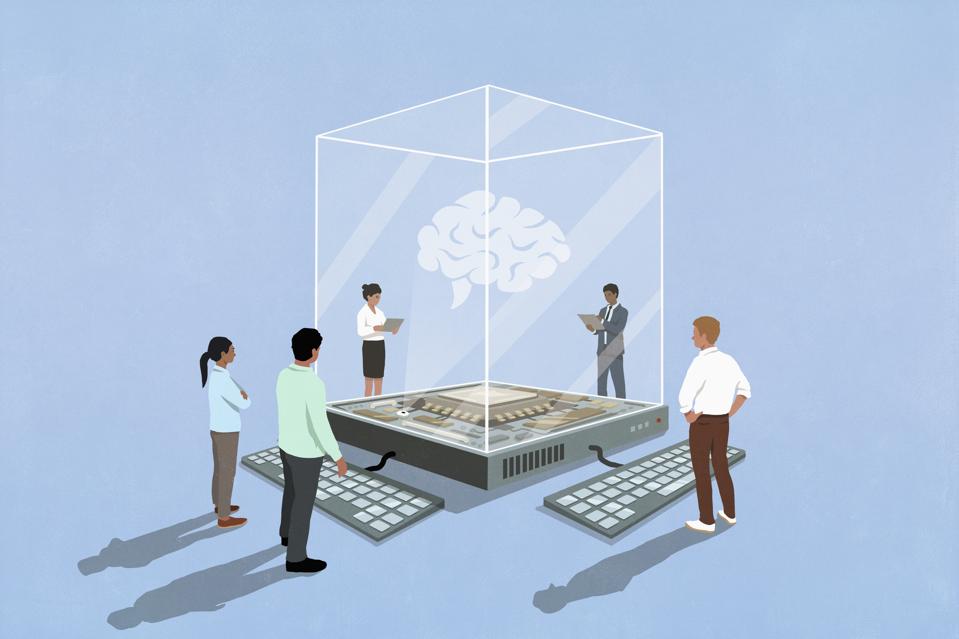
From Microsoft and Apple to film studios and music companies, investments in AI technology are happening on a global level, across industries—with varying results. Buy-now-pay-later firm Klarna is a recent example of how these investments can significantly backfire: After heavily investing in AI and cutting its workforce, Klarna conducted a massive recruitment campaign for human customer service agents after only a year. This reversal should serve as a caution to companies to make AI investment decisions with care.
As leaders navigating AI adoption themselves, the members of Forbes Business Council know the potential benefits and challenges of AI investments. Below, 20 of them share what companies need to consider before making heavy investments in AI, as well as the impact these investments can have on a business.
1. Clear Goals
Heavy AI bets often stumble when organizations skip the basics of clear goals, good processes and human readiness. The key isn’t to chase shiny tools but to ask, “What problems are we trying to solve?” Without clarity and strategy, AI investments risk waste. With clarity and strategy, AI can be a force multiplier. – Abby Clobridge, FireOak Strategies
2. Current Infrastructure
Companies should consider data infrastructure, governance and operational maturity because AI does not replace processes, but transforms them. Therefore, if a company lacks clean data or restructured data to align with AI workflows, earned efficiency quickly erodes. Furthermore, AI should augment humans, not eliminate them. – Oubai Al Hendi, twigBIG
Forbes Business Council is the foremost growth and networking organization for business owners and leaders. Do I qualify?
3. The Organizational Impact
Companies often forget AI isn’t just a tech bet; it is an organizational redesign. Heavy AI investments should be treated like mergers. Focus on model integration risks, the cultural impact, reversibility and customer expectations before cutting people. Ignoring this creates “whiplash costs.” Lost trust, decreased morale and backtracking will all be very expensive for companies. Focus on balance first and scale second. – Ines Nasri, WebPower USA LLC
4. Internal And External Pressures
AI technology is still nascent, and many business cases are in development. The risks of being an early adopter may well outweigh the benefits. Avoid succumbing to pressure from within or outside the company. Do pilots for a meaningful amount of time with real measures before committing to large investments. – Duncan Gillis, TERREPOWER (formerly BBB Industries)
5. The Limits Of Technology
Heavy AI investment without understanding the technology’s limits is an expensive trial-and-error process. AI isn’t a magic switch, but a lever. Before replacing people, run real pilots to test where it truly beats humans. Augment before you automate. I recommend using AI for low-context work and keeping humans for judgment. If you move too fast, you’ll end up with wasted money and broken trust. – Quinn Liu, Finiti Legal
6. The Trade-Offs
Companies must evaluate the trade-offs. Remember that customers value human connection. When used wisely, AI speeds up processes and supports teams. When used poorly, it weakens service and trust. Balance is key to keeping both efficiency and loyalty. Companies should ask themselves what problem they are trying to solve by replacing humans with AI. Then, they must predict if it will do so or actually hurt them. – Adi Klevit, Business Success Consulting Group
7. The Human Touch
Companies must consider where customers want the human touch. Where do humans do something better? With more and more AI tech being deployed, people are craving a personalized, human experience even more. They are also tired of talking to bots. In my business, I see they value the human connection most. Focus on where that human connection needs to stay before investing in AI. – Kimberly Afonso, The KA Consulting Group
8. Empathy
AI can drive efficiency, but not empathy. Klarna’s case shows that replacing humans too quickly often backfires. Companies should define the real problem first, prepare teams and blend automation with human judgment. AI works best as a copilot, not a replacement. That’s how you scale without losing customer trust. – Muhammad Muzammil Rawjani, Software Orca
9. Strategic Workforce Planning
Klarna’s experience is a cautionary tale. Aggressive AI automation without strategic workforce planning often leads to expensive course corrections and brand damage. Before finding the optimal balance between human intelligence and AI optimization, I predict many companies will experience this same pendulum swing of rushing toward full automation only to retreat back to human-centered approaches. – Spiwe Jefferson, Moyana Music
10. Maintenance Of Established Contact Systems
The development of AI applications often requires significant adaptations as the system learns from customer interactions. Always allow users the option to contact a human when a situation falls outside the intended scope. Gradually, more scenarios will be incorporated until the point is reached where the relationship between AI and humans is fully optimized. – Alvaro Diez, Pieocentral LLC
11. Defined Success Metrics
From my experience, too many companies are making people decisions before AI outcomes are even proven. Investing heavily in AI is a must, but that investment needs to be balanced with clear measures of success that give you higher confidence that decisions are being made in the best interests of customers and the business. – Jorge Olavarrieta, Intuit
12. Pilot Programs
First, leaders need to always be thoughtful before reducing headcount. However, we should not be overly cautious when experimenting with new approaches. What usually works is testing ideas the old-fashioned way by building pilots and proofs of concept and trying them out at a “furious” pace. You’re not aiming for perfection at this stage. The results will allow for a prioritized change approach. – Sunny Banerjea, DFW Angels
13. Potential Value Creation
Before investing heavily in AI, companies should focus on where it can create the most value. For example, use AI to automate repetitive tasks, uncover insights and reduce errors, while still recognizing where the human touch drives the best outcomes. When AI is used to empower employees rather than replace them, it boosts efficiency, sharpens decision making and allows teams to focus on higher-impact work. – Laurent Charpentier, Yooz
14. AI Comprehension Capabilities
Klarna’s reversal shows the risk of overrelying on AI for customer service. Queries rarely follow neat flows, as people phrase questions in countless ways—often emotionally. AI that expects “correct” inputs creates frustration. To succeed, AI must handle language flexibly at scale with nuance and empathy. Otherwise, the human touch remains essential. – Thomas Blanchfield, Complex Law
15. The Ultimate Goal
Companies need to decide if AI is meant to replace workers or make existing ones more effective. Today, AI works best with humans in the loop, handling scale while people handle nuance. Overreplacing employees can backfire, hurting customers and morale. The smarter move is to invest in AI that augments people until infrastructure catches up. – Daivik Goel, Shor
16. AI Process Capabilities
In Switzerland, we had an AI debt collection company that failed after a year because there was no risk analysis of which financial and communication processes can be replaced by AI and which ones cannot. These lessons learned are just a reminder that not all processes are ready for automation and AI agents. A strategy with risk management must guide innovation. – Bojan Ilic, Swiss Security Solutions LLC
17. Customer Maturity
Companies rush into AI without understanding customer maturity. Just because you can build something doesn’t mean it’s valuable. Before making heavy AI investments, ask yourself whether it will solve real customer problems or just excite technologists. Focus on what customers actually need, not flashy capabilities. Strategy means saying “no” to exciting tech until you find genuine problem-market fit. – Sharat Potharaju, Uniqode
18. Worst-Case Scenarios
AI is not a “magic button,” and it should only be deployed where the system has room for error—like in data analysis, personalization or recommendations. But customers have zero tolerance for mistakes, so critical interactions still need humans. Leaders must calculate worst-case scenarios, not just savings, before heavy AI bets. The risk isn’t overinvesting—it’s misplacing AI where failure isn’t an option. – Sima Mosbacher, HIGHSCALE AI
19. Contingency Plans
AI is not a magic wand; it’s a powerful tool capable of significant improvements in efficiency and potentially the bottom line. Like all powerful tools, though, it needs to be assessed, understood and deployed with contingencies put in place. What’s your backup or contingency plan? How will the impact of AI be monitored? What are the decision gates? AI is not a fire-and-forget weapon, but a guided torpedo. – Brendon Grunewald, Praefidi
20. Long-Term Implications
Companies need to carefully evaluate the long-term implications of AI adoption before making heavy investments. While AI can deliver efficiency and cost savings, it’s not a one-size-fits-all solution. The key is to balance automation with human oversight so organizations don’t end up backtracking and incurring high financial and cultural costs in the long run. – Rajan Sethuraman, LatentView Analytics





